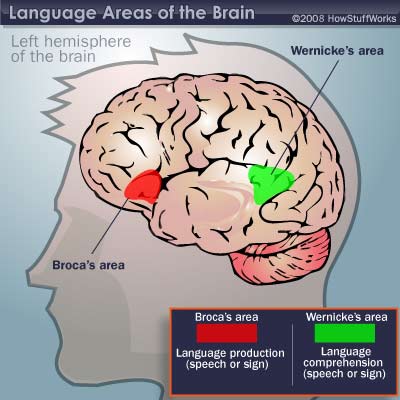Learning a new language is a complex and fascinating process that engages multiple areas of the brain. Understanding how our brain processes and acquires a new language can not only demystify the learning journey but also enhance our strategies for mastering a foreign tongue.

The Brain’s Architecture for Language Learning
The human brain is uniquely wired for language. Two critical regions are primarily responsible for language processing: Broca’s area and Wernicke’s area.
– Broca’s Area: Located in the frontal lobe, Broca’s area is associated with speech production and articulation. This region is crucial for generating language and constructing grammatically correct sentences.
– Wernicke’s Area: Situated in the temporal lobe, Wernicke’s area is essential for language comprehension. It helps in understanding spoken and written language and is vital for making sense of sentences.
Neuroplasticity: The Brain’s Adaptability
Neuroplasticity, the brain’s ability to reorganize itself by forming new neural connections, plays a vital role in learning a new language. When exposed to a new language, the brain adapts by creating and strengthening pathways that facilitate language acquisition. This adaptability is most pronounced in younger individuals, which is why children often learn languages more quickly than adults. However, adults can also leverage neuroplasticity with consistent practice and exposure.
The Stages of Language Acquisition
Language learning can be divided into several stages, each engaging different cognitive functions and brain regions:
- Initial Exposure and Phonetic Learning: The first stage involves recognizing and producing the sounds of the new language. This process activates the auditory cortex and involves extensive practice in mimicking pronunciation and intonation.
- Vocabulary Acquisition: Building a vocabulary requires the hippocampus, a region associated with memory formation. Repetition and contextual usage help transfer words from short-term to long-term memory.
- Grammar and Syntax Mastery: Understanding and applying grammatical rules engages the prefrontal cortex. This area is responsible for higher-order cognitive functions such as planning and problem-solving, which are essential for constructing coherent sentences.
- Fluency Development: Achieving fluency involves the integration of all previously acquired skills. The brain’s language network, including the arcuate fasciculus (a bundle of nerve fibers connecting Broca’s and Wernicke’s areas), facilitates fluid communication and comprehension.
Cognitive Benefits of Bilingualism
Learning a new language does more than just equip you with the ability to communicate in another tongue; it also enhances cognitive abilities. Research indicates that bilingual individuals often have better executive function, improved problem-solving skills, and greater mental flexibility. These cognitive benefits stem from the brain’s constant need to switch between languages and inhibit interference from the non-target language.
Practical Implications for Language Learners
Understanding the brain’s role in language learning can inform more effective strategies for mastering a new language:
– Immersive Learning: Engaging in conversations with native speakers and immersing oneself in the language environment can accelerate acquisition by providing practical context and real-life usage.
– Consistent Practice: Regular practice and repetition are crucial for strengthening neural pathways associated with the new language.
– Multisensory Learning: Incorporating listening, speaking, reading, and writing activities can enhance memory retention and language proficiency.
The brain’s remarkable ability to adapt and reorganize itself is at the heart of language learning. By leveraging our understanding of how the brain processes and acquires a new language, we can adopt more effective learning strategies, ultimately making the journey of language acquisition both enriching and attainable.

